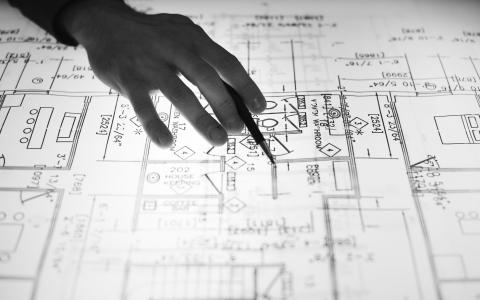
(iBerkshires.com) - If you've ever been involved in building a house — or even if you've just heard about it — you know that there's a well-defined process to be followed. But here's something to think about: Some of the same steps connected to constructing a home are the same as those needed to build an estate plan.
What are those steps? Here are some to consider:
- Get the right "builder." Unless you're an experienced do-it-yourselfer, you'll probably have to hire someone to build a house for you. Of course, you'll make your wishes known about what you want your house to look like, but you'll be relying on the builder's expertise. And the same is true with estate planning — you'll want to share your goals and vision with a legal professional who's experienced in creating comprehensive estate plans.
- Build a strong foundation. "Every house needs a strong foundation" isn't just a metaphor — it's true for every house that's built. And when you create an estate plan, you also need a foundation that includes whatever basic elements are appropriate for your situation — a will, a living trust, power of attorney and so on.
- Make the necessary additions. Even if you're pleased with your new house, you may eventually decide to make some changes, such as adding on a new bedroom or bathroom. And the structure of your estate plan may need to undergo some modifications, too. For example, if you drew up a will two decades ago, but haven't looked at it since, it may be out of date — especially if you've experienced changes in your life, such as new children or a divorce and remarriage. That's why it's a good idea to review your estate plans at least every few years.
- Protect your investment. Of course, when you build a new house, you'll have to insure it properly. And while there's no actual "insurance policy" for an estate plan, you do have ways to protect it. For one thing, you need to make sure beneficiary designations on retirement plans, investment accounts, insurance policies and other assets are correct. These designations are powerful and can even supersede the instructions in your estate-planning documents. So, as mentioned, if you've had significant life changes involving your family, you need to ensure your beneficiary designations are updated if you want to protect how insurance proceeds, investments and other assets are distributed.
- Watch for mistakes. It's unfortunate, but mistakes do happen in home construction. Water stains can indicate that water is seeping through cracks in the foundation. Or cracks in retaining walls and garage floors could be a sign that the concrete structures were installed improperly. Estate plans can also contain errors or bad choices. Some are inadvertent, such as failing to put intended assets into a trust, but others are done with the best of intentions, such as naming adult children as joint owners of your assets. Even if your children are quite responsible, this move could give their creditors access to your money. If you want your children to be able to step in as needed, you could find other methods, such as giving them power of attorney.
Following these "construction" techniques can help you create an estate plan that can last a lifetime — and beyond.
By Edward Jones
This article was written by Edward Jones for use by your local Edward Jones financial advisor. Courtesy of Rob Adams, 71 Main Street, North Adams, MA 01247, 413-664-9253.. Edward Jones, its employees and financial advisors cannot provide tax or legal advice. You should consult your attorney or qualified tax advisor regarding your situation. For more information, see This article was written by Edward Jones for use by your local Edward Jones financial advisor. Courtesy of Rob Adams, 71 Main Street, North Adams, MA 01247, 413-664-9253.. Edward Jones, its employees and financial advisors cannot provide tax or legal advice. You should consult your attorney or qualified tax advisor regarding your situation. For more information go to www.edwardjones.com/rob-adams.



